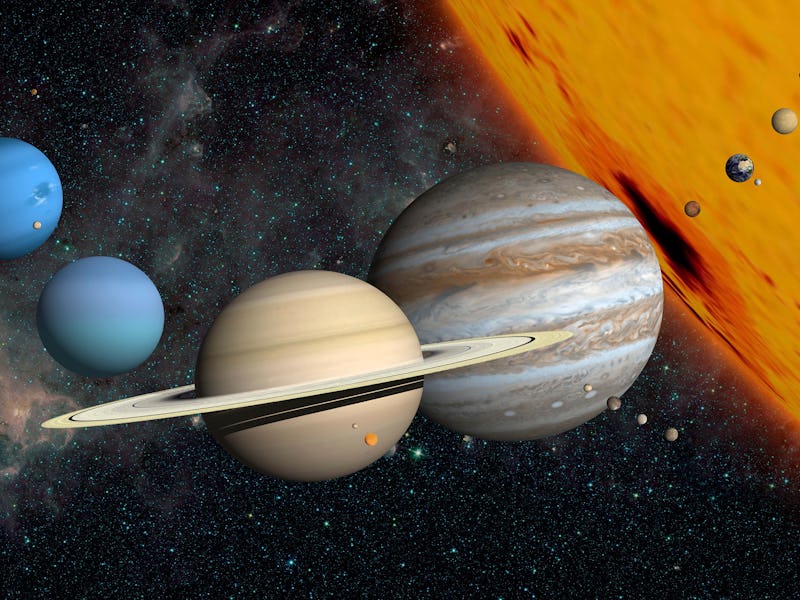You need to see Jupiter, Saturn, and Mercury aligned in the sky this week
And a crescent Moon, too.

The planets of the Solar System orbit around a common host star, each according to their own pace. Every now and then, two or more of these planetary bodies align in their orbit, forming a beautiful sight for our Earthly skies.
This week, the planets Jupiter, Saturn, and Mercury meet for a rare rendezvous that also happens to take place with the backdrop of a crescent Moon, creating a breathtaking sight out of this cosmic coincidence.
How to see it — On Wednesday, Jupiter and Saturn will not only be joined by Mercury, but also by a waning crescent Moon.
In order to view this rare sight of these four beautiful celestial objects together, look towards the mid-northern latitudes around 45 minutes before sunrise at 5:45 a.m. Eastern on Wednesday.
Mercury will rise a little before dawn, joining Saturn and Jupiter in the sky. Meanwhile, the Moon will be closer to the horizon by the time the three planets align. The thin waxing Moon will appear about five degrees to the lower right of Jupiter and will only be around nine percent illuminated, according to EarthSky.
This rare sight is visible to the naked eye, but a handy pair of binoculars will help you get a closer look at the three planets and the accompanying Moon. The presence of the Moon may make difficult viewing, depending on the amount of light pollution in your area.
What is a planetary conjunction?
A planetary conjunction takes place when the planets' respective orbits align from our view from Earth to create an optical effect whereby they appear side by side in our skies. But in reality, the physical distance between the planets in question remains the same.
Jupiter and Saturn joined forces in December, 2020, creating this visual effect in our night skies on the day of the winter solstice.
In December 2020, the planetary conjunction of Jupiter and Saturn hadn't happened in nearly 400 years, bringing the two planets the closest they had been in decades where they appeared as almost one large, bright star in the sky.
This time, it’s Jupiter and Mercury that will be close together in the sky, just 0.3 degrees apart. While this is 0.2 degrees further than Jupiter and Saturn were at their recent conjunction, both planets will appear eerily close from our point of view, with Saturn appearing on the right of both planets at about 8 degrees above the horizon.
Why you should look — As the smallest and nearest planet to the Sun, Mercury is a rare sight for us on Earth. It’s typically only visible just after sunset or just before sunrise, and only at certain times of the year.
Mercury reached its greatest maximum elongation from the Sun earlier this month and the planet is still faintly visible in the sky.